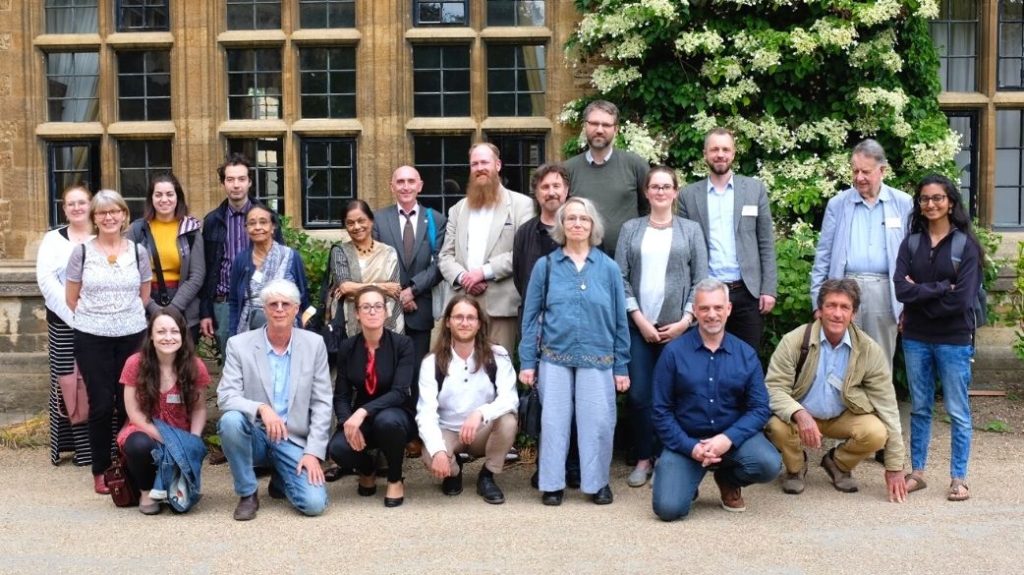The Sanskrit Traditions in the Modern World Symposium celebrated its 37th event on 28th May 2021, bringing together a global community of scholars working on Sanskrit sources of all kinds, in a shared conversation hosted by the Oxford Centre for Hindu Studies. The Symposium enjoys a unique structure of having pre-circulated papers introduced by a scholar who then turns over to a response from the author, and opens the floor to general discussion from the audience. This year, as ever, this allowed for vigorous and collegial engagement on a range of topics. Approximately fifty participants from as far afield as Canada, Australia, India and across Europe joined in.
This year the Symposium’s papers were on Kuṇḍalinī in the early Haṭha corpus (Ruth Westoby, SOAS), Dharmaśāstra in the 2019 Ayodhya Verdict (C. T. Fleming), the Intertextuality of the Dharma-maṅgala (Rebecca Manring), and Sanskrit Humour in Kutiyattam Performance (Elena Mucciarelli & Adheesh Sathaye). The respondents were Jason Birch, Mandakranta Bose, Ishan Chakrabarti, and Jacqueline Hirst.
The Symposium was a great success, bringing together the enduring community of Sanskrit scholars in a lively, rich, and warm conversation; we look forward to May 2022.

Oxford Centre for Hindu Studies
13 – 15 Magdalen Street, Oxford OX1 3AE.
UK Tel: 01865 304300
Regd Charity No. 1074458